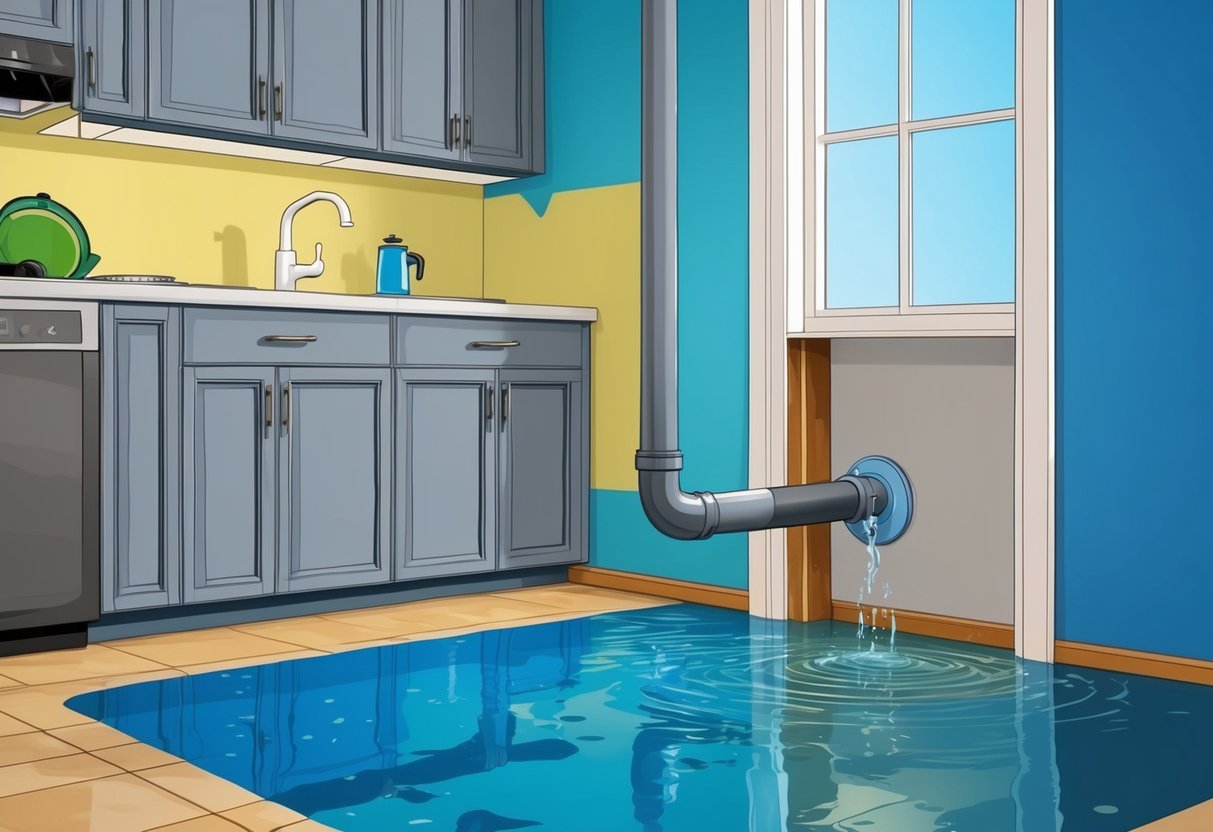
Homeowners often overlook the signs of hidden water leaks until it’s too late, putting their property at risk for unexpected and costly damage.
Detecting and preventing hidden water leaks early is the most reliable way to protect a home from structural issues, mold growth, and wasted resources.
By using simple home maintenance strategies and paying attention to subtle plumbing cues, residents can spot potential trouble before it escalates.
Many effective water leak detection hacks and preventative measures are accessible to anyone, whether they’re first-time homeowners or seasoned DIY enthusiasts.
Tools such as leak sensors, moisture meters, and even smart water monitors are now widely available to help pinpoint problems that may otherwise go unnoticed.
Creative methods like dye testing and repurposed household items have also gained popularity among those eager to minimize the risk of water damage while avoiding expensive repairs.
Home maintenance routines that include inspecting pipe joints, replacing worn washers, and installing easily accessible shut-off valves further strengthen a property’s defenses against hidden leaks.
Learning how to combine these practical tips equips individuals to act with confidence and keep their homes safe, dry, and efficient.
Understanding the Threat of Hidden Water Leaks
Hidden water leaks can undermine the safety and value of a home, often going unnoticed until significant damage has occurred.
Effective home maintenance depends on recognizing leak sources, understanding the impact on property structure, and identifying the financial risks of deferred repairs.
Common Causes of Water Leaks
Water leaks usually stem from issues such as aging pipes, faulty appliance connections, broken HVAC systems, and cracks in walls or foundations.
Corrosion in old metal plumbing or loose fittings around sinks and washing machines are frequent culprits.
Roof damage, especially after storms, can allow water infiltration that is not immediately obvious.
Leaks are also common in areas with poor ventilation, which can lead to condensation and moisture buildup behind walls.
Bathroom fixtures, water heaters, and dishwashers are typical sources for hidden leaks.
Regular inspections of these systems, as well as monitoring for changes in water pressure, play a crucial role in proactive home maintenance.
Risks to Structural Integrity
Hidden leaks can compromise a home’s structural integrity over time, especially when they affect foundational elements.
Moisture seeping into framing wood, drywall, or insulation causes materials to swell, rot, and lose strength.
This is particularly concerning around load-bearing walls and floors that support the house.
When water infiltrates structural components, it increases the risk for mold growth and pest infestations.
Floors may become uneven, walls can buckle, and ceiling materials may sag or collapse.
According to professionals, detecting leaks early is essential for preventing these structural risks that can threaten the safety of those living in the home.
Long-Term Damage and Costly Repairs
Water infiltration that continues undetected leads to long-term damage with high repair costs.
Persistent leaks can decay wooden supports, damage electrical wiring, and create conditions for extensive mold remediation, often resulting in extensive and expensive work.
Floors, walls, and ceilings that are left unchecked may require full replacements.
Ignoring hidden water damage also raises the likelihood of needing to replace major appliances or systems affected by corrosion.
Insurance claims for water damage can increase future policy premiums and may not always cover all losses.
Identifying and addressing leaks early helps homeowners prevent costly repairs that impact both finances and property values.
Key Signs of Concealed Water Leaks
Detecting concealed water leaks early helps prevent property damage, mold issues, and costly repairs.
Recognizing the warning signs involves paying close attention to changes in moisture, visual appearance, and household efficiency.
Detecting Moisture and Mold Growth
Moisture accumulation inside walls or floors often creates an environment where mold growth flourishes.
Residents may notice dark spots, fuzzy growth, or a persistent musty odor in certain rooms.
Mold may appear in corners, behind furniture, or along baseboards, even in areas not routinely exposed to water.
Prolonged dampness can damage drywall and wood, often leaving a soft or spongy texture when pressed.
If excess condensation or humidity is observed on windows or walls, it is advisable to look for possible leaks nearby.
According to expert guidelines, unexplained mold or dampness is one of the key early signs of a hidden water leak.
Regular inspections of bathrooms, basements, and kitchens for visible or hidden signs of water are recommended.
Homeowners should also monitor for allergy symptoms or worsening respiratory issues, which can be triggered by undetected mold growth in concealed spaces.
Recognizing Subtle Stains and Odors
Stains on ceilings, walls, or floors often signal recent or ongoing leaks.
These stains may be yellowish, brown, or even gray, and commonly appear in random shapes rather than neat lines.
Peeling paint, bubbling wallpaper, or warped surfaces are classic indicators that water is seeping through building materials.
Unusual odors offer another important clue.
A damp, earthy, or musty smell in areas with no apparent water source suggests moisture is accumulating behind surfaces.
Investigating these subtle changes can reveal leaks before major structural damage occurs.
Look for soft spots, sagging ceilings, or unexplained water puddles near sinks, toilets, or appliances.
Checking exposed pipes in crawl spaces and basements for corrosion or pooling water can improve leak detection.
For more details, learn about how to detect wall leaks and identify discoloration.